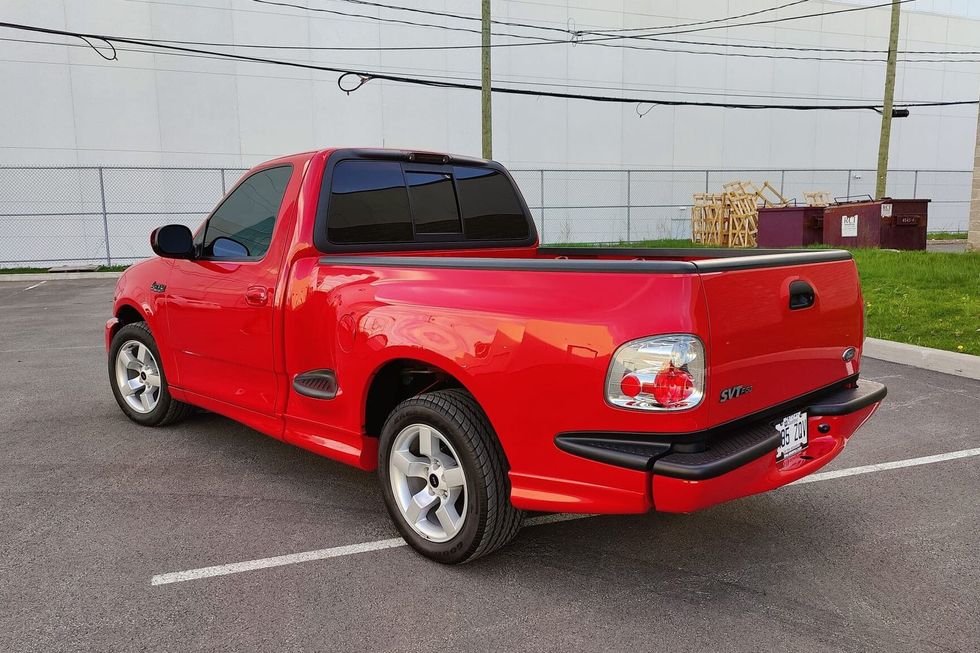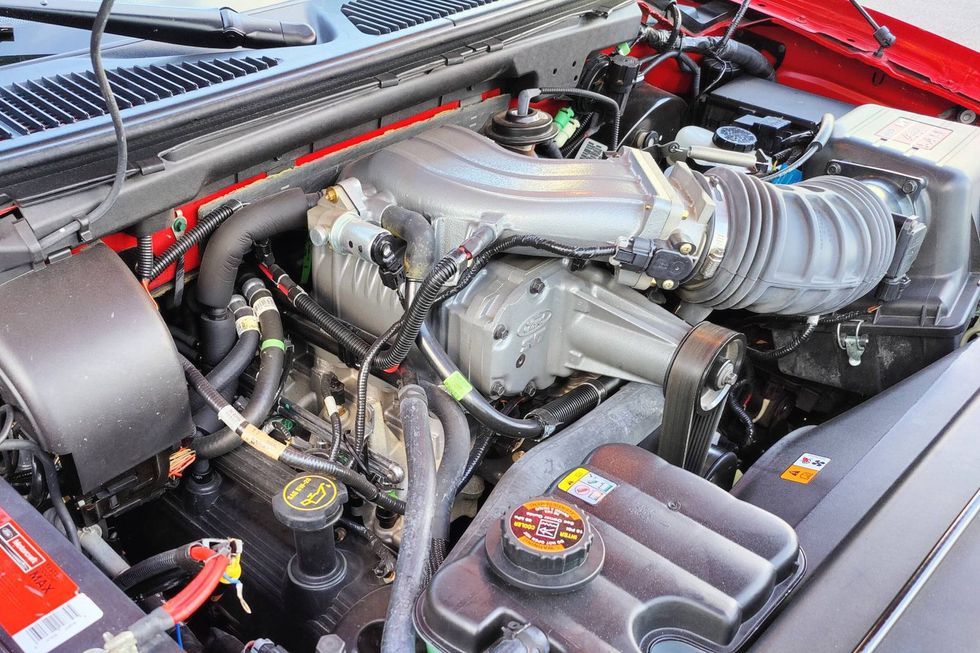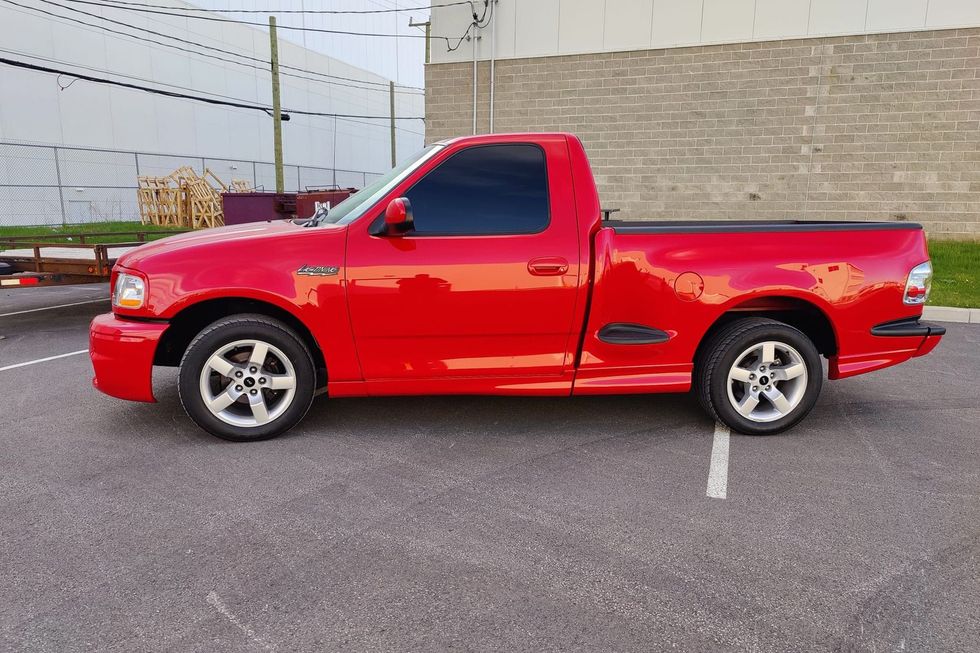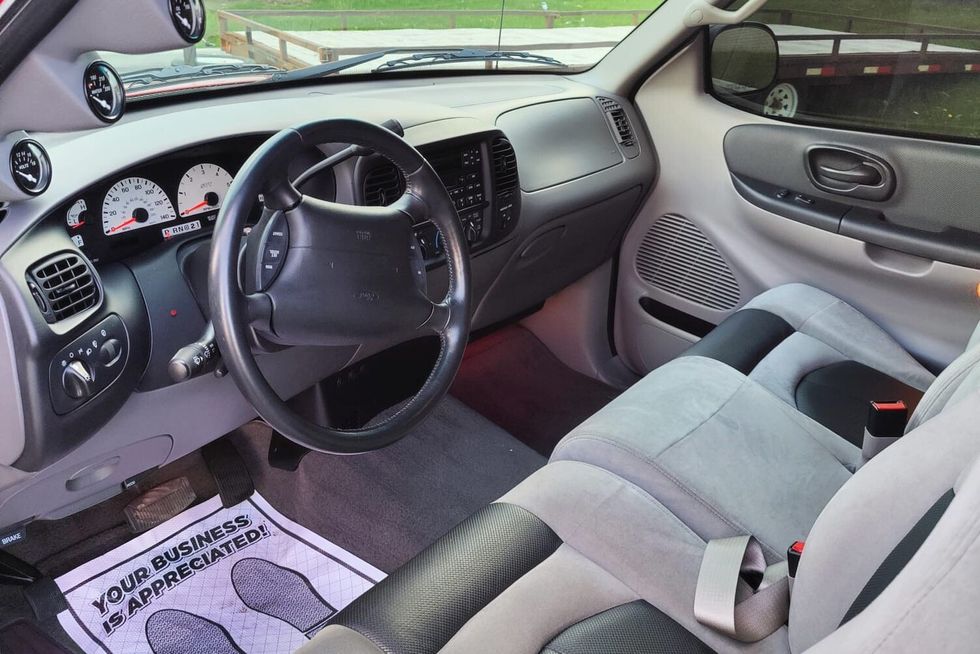"A whole new car - a lot of new technology:" 1982 Chevrolet Camaro brochure
03/15/2018


Images are from the brochure collection of Hemmings Motor News, courtesy of Bruce Zahor.
It's difficult to overstate what a difference GM's new-for-1982 F-body sports coupes were, as they represented a drastic change from the long-serving 1970-1981 models. The new, third-generation Camaro was notably smaller (down 10 inches), sleeker (.374-.369 versus .412 coefficient of drag), and lighter (roughly 450 pounds) than its predecessor, and with revised front strut/coil spring underpinnings, had a renewed focus on handling. Styling was crisp and full of Eighties attitude, with exposed quad headlamps that differed from the pop-up units Pontiac specified for its equally fresh, aerodynamically-optimized Firebird.
Chevrolet touted the technology used to develop this new Camaro in the car's 18-page, 1982 model-year brochure. The opening spread offered an era-appropriate high-tech look, with its graph paper effect and detailed cutaway illustration.
As was standard pony-car practice, Chevy offered a number of variants -- from basic and mild-mannered to (relatively) powerful and full of attitude -- designed to appeal to a wide swath of buyers. The entry-level Sport Coupe -- which cost $7,631-7,925, or roughly $19,340-20,130 today -- came with body-color steel rally wheels (whitewalls and full wheel covers were optional!) and a fuel-injected 2.5-liter/151-cu.in. four-cylinder: the Pontiac-built "Iron Duke," making 90 hp and 132 lb-ft of torque, figures notably absent in this brochure! The Euro GT-themed Berlinetta was the mid-level ($9,266-9,436, or $23,535-23,970) choice, and it combined Chevrolet's 2.8-liter/173-cu.in., two-barrel-carbureted V-6 (102 hp and 142 lb-ft of torque) with standard 14 x 7-inch alloy wheels and comfort suspension, gold-toned striping and badges, and a lux-themed interior with extra sound insulation. The hot Z28 (priced at $9,700-10,150, or $24,640-25,780) featured a special body kit, a sport suspension with 15 x 7-inch alloys, and standard 5.0-liter/305-cu.in. V-8 making 145 hp and 240 lb-ft of torque with a Rochester four-barrel carburetor, or 165 hp and 240 lb-ft of torque with Cross-Fire Injection EFI. Transmission choices were limited to a four-speed manual or three-speed automatic, the latter being standard with the fuel-injected V-8. And all examples shared a unique, dual-needle 85-mph/140-kph speedometer.
Of course, buyers could personalize their Camaros in many ways, with options including engine upgrades, four-wheel disc brakes (available on V-8 cars), a limited-slip differential, air conditioning, multi-adjustable Lear Siegler "L/S Conteur" seats (Z28 only), various stereos, and, of course, T-tops.
This Camaro was chosen to pace the 1982 Indianapolis 500, and Chevrolet celebrated by building a reported 6,360 Official Pace Car replicas that were distinguished by their eye-catching silver and blue livery outside and in, and standard V-8 engines. Another honor was the Z28 winning Motor Trend magazine's Car of the Year award.
Like its predecessor, the third-generation Camaro would be long-lived, remaining in production through 1992 and selling strongly -- nearly 185,000 in 1982, alone. Coveted examples would include the convertibles, IROC-Zs, and police package-equipped models.
Have you owned or enjoyed cruising in a third-gen Camaro?
Click on the brochure images below to enlarge.
Forget Ford’s groundbreaking electric truck for a moment to consider this 2001 Ford SVT F-150 Lightning now offered on Hemmings Auctions. Instead of the dual permanent-magnet motors found in the current electric Lightning, the 1999-2004 SVT Lightning featured a supercharged version of Ford’s 5.4-liter “modular” OHC V8. Rated at 380 horsepower in the 2001-’04 models, it was good enough to make a stock lightning a formidable opponent on the street as well as at the strip.
A follow-up to the original 1993-’95 F-150 Lightning, which was a high-performance version of a standard F-150, the second-generation SVT super truck presented as a more thoroughly developed model with a lot more exclusive components that further differentiated it from the rest of the F-Series lineup. Beyond the engine, the entire suspension and braking system, not to mention aerodynamic body add-ons, were part of the Lightning package from 1999 through 2004. Exclusive interior components were also part of the package.
At the heart of this SVT Lightning is its iron-block 5.4-liter SOHC, 16-valve V8 with a supercharger and an intercooler. The blower helped it deliver 380 horsepower and 450 lb-ft of torque in 2001, up some 20 horsepower and 10 lb-ft from the ’99 and 2000 models. The Eaton supercharged engine delivered peak boost of 8.0 psi and the engine featured an 8.4:1 static compression ratio, down from the standard 5.4 V8’s 9.0:1, which was rated at 260 horsepower and 350 lb-ft.
Power reached the rear 18-inch cast aluminum-alloy wheels via a four-speed automatic, an aluminum driveshaft and a beefy 9.75-inch, limited-slip rear axle with an acceleration-friendly 3.73:1 final-drive ratio, another upgrade for 2001. Car and Driver magazine reported a 0-60 mph time of 5.2 seconds and a quarter-mile in an E.T. of 13.8 seconds at 104 mph—impressive numbers for a 4,600-pound truck. Top speed was a drag-limited 142 mph.

Trucks generally require a suspension that can handle a full load in its bed while also providing competent driving while empty. But if you fancy one designed to a sports-car standard, then something has to give. In the case of the second-gen Lightning, Ford dropped its payload capacity to a mere 800 pounds. A standard 2001 F-150 Styleside carried a 3,180-pound payload rating, while an F-150 Flareside was rated at 2,005 pounds, some two-and-a-half times the Lightning, which featured the short-bed Flareside body. Towing capacity, likewise, was reduced from 8,800 pounds to 5,000 in the Lightning. But the Lightning’s strengths were never its payload or towing capacities, but it’s ability to perform like a sports car.
As a 21st century performance vehicle, however, the second-gen Lightning was also equipped to handle. A half-inch drop at the front was accompanied by SVT-specific coil springs and Bilstein shocks along with an exclusive 31-mm solid anti-roll bar. SVT’s influence continued at the rear with Lightning-specific five-leaf springs and a 23-mm solid anti-roll bar. The Bilstein setup at the rear included the right-rear shock staggered toward the front of the truck to reduce axle hop under heavy acceleration. The four-wheel antilock disc brakes were cribbed from the three-quarter-ton F-250, with 12.1-inch front rotors at the front and 13.1-inch discs at the rear.

As the years go on, fewer and fewer clean, unmolested low-mileage examples are out there, which is why this 2001 Ford SVT F150 Lightning now on Hemmings Auctions caught our attention. Showing just 5,525.5 miles on its odometer at the time of submission, it is said to be in “mint” condition and have an “immaculate” finish in the seller’s words. No modifications are noted to any part of the vehicle. The 18-inch factory alloys don’t appear to have any curb rash, though the Goodyear performance tires may be original. About the only deviations from stock are the tinted windows.
The latest electric-only F-150 Lightning is certainly a quick vehicle in its own right, but this 2001 edition from the engineers at SVT was built for excitement, not range. It was made with an old-school muscle-car vibe along with modern handling and braking. Which Lightning would you look good behind the wheel of?
Take a look at this second-gen Lightning on Hemmings Auctions before the bidding ends.

Tim Kuniskis, longtime Stellantis executive and a prominent voice in the modern-day American muscle car era, is retiring after 32 years with the company. Kuniskis, also known as the godfather of the Hellcat V8, was appointed Brand Chief Executive Officer (CEO) of Dodge and a member of Stellantis' Top Executive Team in January 2021. He took charge of Ram in July of 2023. His retirement begins on June 1st of this year.
With Kuniskis leading the way, the Dodge brand embraced its American muscle car image, further building a passionate fan base for its high-performance vehicles, including the Charger, Challenger, and the Viper, by introducing the “Brotherhood of Muscle.” We saw the return of Dodge’s Direct Connection subbrand, which makes tuning products more accessible to its enthusiasts.
Kuniskis was there through Dodge’s Last Call campaign, the brand’s final send off for two of its iconic V8-powered muscle cars, the Dodge Challenger and Charger models, before turning the page to the next generation. Dodge’s Last Call models included the 2023 Dodge Challenger R/T Scat Pack Shakedown, 2023 Dodge Charger Super Bee, 2023 Dodge Challenger R/T Scat Pack Swinger, 2023 Dodge Charger R/T Scat Pack Swinger, 2023 Dodge Charger King Daytona, 2023 Dodge Challenger Black Ghost, and the 2023 Dodge Challenger Demon 170. He also oversaw the next generation muscle car’s reveal, which confirmed the offering of an all-electric powertrain, plus he played a key role in the reveal of the all-electric 2025 Ram.
“I want to take the opportunity to warmly thank Tim for his passion, commitment and contributions to Stellantis and in defining the vision of the future electrified Ram and Dodge brands,” said Stellantis CEO, Carlos Tavares. “I wish him well in his retirement.”
Tim Kuniskis’s retirement comes at a challenging time for the company. Dodge has seen a drop in sales since the phase out of the previous Challenger and Charger models. Sales were down by 16-percent for the Charger coupe and sedan in Q1, while at the same time, Ram sales reportedly dropped by 26-percent. Vehicle shipments worldwide were down 10-percent (to 1.3 million) compared to the same three-month period a year ago. Stellantis revenue declined by a total of 15% to $20.7 billion.
Stepping up to the company’s future challenges in Kuniskis’s place is Matt McAlear, the new CEO of Dodge, who led Dodge's sales operations in the recent past. Christine Feuell, prior Chrysler CEO who had a hand in the reveal of the Halcyon Concept earlier this year, will now be in charge of the Ram brand.

Christine Feuell
Stellantis

Matt McAlear
Stellantis
“I am confident that Chris will continue the work of Tim in leading the iconic Ram brand,” said Tavares. “Matt will bring a fresh perspective, while continuing to draw on the heritage of our iconic Dodge brand and leading the transition of the brand toward a sustainable future.”